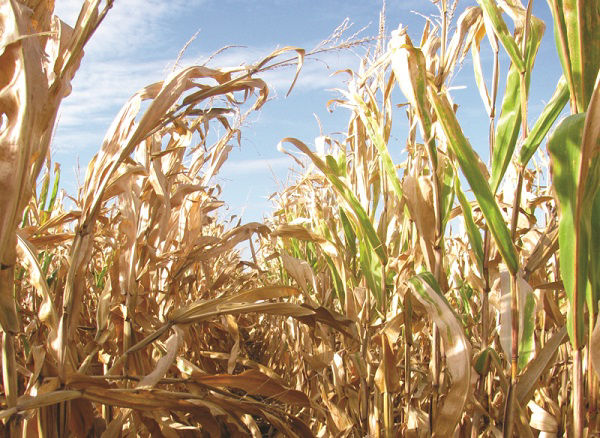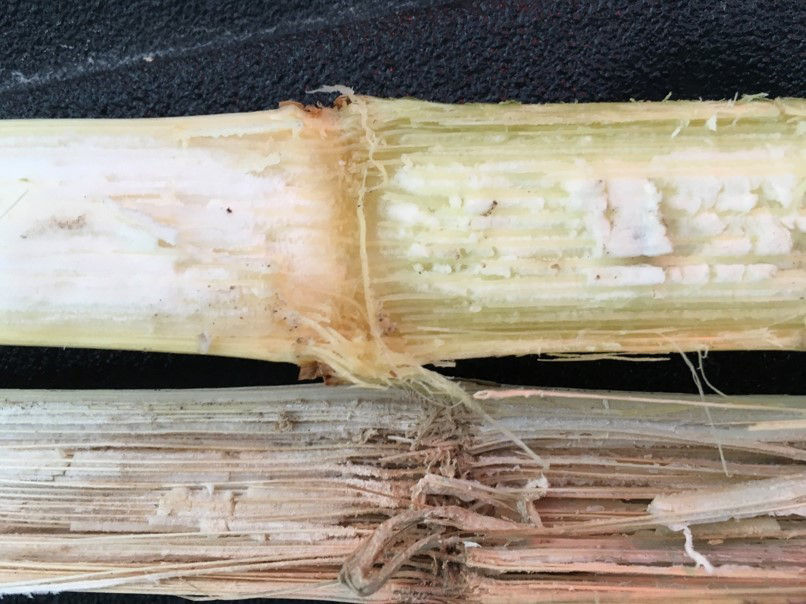Four Key Components of Harvestability in Corn
December 18, 2018

Throughout the entire growing season, it is important to think about and take steps to promote good harvestability in corn.
Harvestability is the condition of the crop and its suitability for harvest. In other words, harvestability is the ease and efficiency of harvest. Good harvestability maximizes efficiency, boosts productivity, prevents slow-downs and minimizes yield losses.
Keep harvestability in mind all season long
Start the season off on the right foot by planting a hybrid with high stalk and root strength ratings.i A hybrid with strong stalks and roots will better withstand difficult environmental conditions.ii During the growing season, use a fungicide that includes strobilurin and triazole components to promote plant health and protect against diseases. Healthy plants have stronger stalks and roots, and are easier to harvest. At the end of the season, wait for plants to dry down to a low moisture level to promote good harvestability.
“Growers should think about how they can improve harvestability all year long. Not just during harvest,” said Randy Myers, fungicides product development manager at Bayer. “If the right steps are taken to protect a crop’s potential during the season, growers will see the benefits of improved harvestability in the form of higher yields and maximized harvest efficiency.”
Key components of harvestability
During harvest, it is easy to tell if the steps taken during the growing season to improve harvestability paid off. There are four key components that can be easily observed from the cab of the combine.
1. Moisture level
For good harvestability, dry plants are preferred.iii If the sieves of the combine are frequently plugged up, this means the leaves of the crops are too wet. It takes time to stop and unclog the sieves. This slows down harvest speeds, decreasing efficiency and increasing the cost of labor.
2. Husk removal
The ease of husk removal from the corn is another key factor of harvestability. From the combine, look for husks present among the grain. Husks present among grain is a sign of poor harvestability. Husks that remain tight around the ear may not dry down well. When this occurs, the grain is more prone to spoilage, which could also lead to yield losses.iv
3. Kernel attachment to ear
Kernels lost from the ear during the picking process is a sure sign of poor harvestability and can also result in a loss of yield. To prevent loss of kernels, adjust combine settings and groundspeed during harvest.v
4. Standability
A crop’s standability is a critical component of harvestability. Standability is the combination of plant quality, stalk strength and root strength. Plants with disease often have poor standability. From the cab, poor standability becomes clear if there are downed or lodged stalks, which makes harvest more difficult. The combine slows down, increasing labor and fuel costs associated with harvest. These downed stalks also have ears closer to the ground, which are more susceptible to droppage and ear rot. Plants with good standability can be harvested with greater ease and efficiency.
As harvest progresses, if a field has issues with one or more of the key components of harvestability, discuss with an agronomist or consultant how hybrid selection, fungicides or other crop inputs could help improve plant health, stalk strength, and root health for the following seasons. Keeping close track of signs of poor harvestability during harvest can help with decision making the following year.
Bayer solutions for improved harvestability
Delaro® 325 Fungicide can help improve standability, with fewer downed and lodged plants, the true signs of good harvestability. “Using Delaro can improve all-around plant health,” said Myers. “Delaro increases nutrient flow throughout the grain fill period. It also promotes healthy, dark green leaves for improved photosynthesis and helps plants better withstand stress during the season. The result of improved plant health is better standability, which is vital to good harvestability.”

Delaro also provides unmatched, broad-spectrum disease control with two heavy-hitting modes of action. It provides preventative and curative defense against yield-robbing diseases such as gray leaf spot, northern corn leaf blight, anthracnose leaf blight, and southern rust. For more information, visit delaro.us.
Before applying any fungicide, please read the entire label for the best possible results and to confirm the product is effective on the diseases you need to control. Not every product is suitable for every situation. Correct application technique will ensure the best results.
©2018 Bayer CropScience LP, 800 North Lindbergh Blvd, St. Louis, MO 63167. Always read and follow label instructions. Bayer, the Bayer Cross and Delaro are registered trademarks of Bayer. Delaro is not registered in all states. For additional product information please call toll-free 1-866-99-BAYER (1-866-992-2937) or visit our website at www.CropScience.Bayer.us
Sources:
i Roth, G.W. “Considerations for selecting corn hybrids in Pennsylvania.” PennState Extension https://extension.psu.edu/considerations-for-selecting-corn-hybrids-in-pennsylvania
ii Heiniger, R., and Resig, D. “Crop production management – Corn.” NC State Extension, 2014. https://content.ces.ncsu.edu/north-carolina-organic-grain-production-guide-contents-1/chapter-3-crop-production-management-corn
iii Dorenkamp, M., “Corn harvestability slowing harvest.” Brownfield Ag News, 2017. https://brownfieldagnews.com/news/corn-harvestability-slowing-harvest/
iv University of Wisconsin – Extension. “Fall scouting and evaluating field test plots and demonstration strips.” Corn Agronomy, 2014. http://corn.agronomy.wisc.edu/Management/L058.aspx
v Haag, L., Mengarelli, L., Sassenrath, G., Shoup, D., Ciampitti, I., Sharda, A., and Jardine, D. “Corn harvest efficiency.” K-State Research and Extension Agronomy Update, 2013.